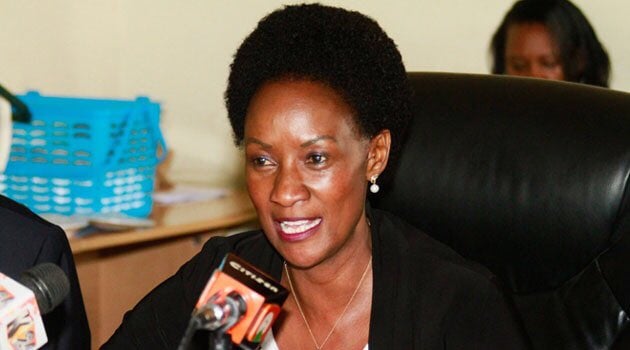New Details Emerge Regarding Closed-Door Meeting Over Teacher Promotions
Additional details have surfaced concerning a confidential high-level meeting involving senior officials from the Teachers Service Commission (TSC) and representatives from the Kenya National Union of Teachers (KNUT) regarding the ongoing teacher promotion dilemma.
The meeting, which took place in Nairobi last week, aimed to tackle the increasing frustrations among educators who perceive themselves as neglected in career advancement issues.
Sources informed about the conversations indicated that KNUT, under the leadership of Secretary-General Collins Oyuu, advocated for prompt action to address the backlog of overdue promotions.
It is reported that Oyuu submitted a list of thousands of teachers who have been in the same job group for several years despite acquiring higher qualifications and exhibiting outstanding service.
TSC officials allegedly attributed the situation to budget constraints and delays in internal vetting, but assured they would provide a detailed plan by the conclusion of the current term.
The meeting also explored the potential for revising the existing promotion framework to enhance inclusivity and transparency.
Although no formal agreement was established, insiders described the discussions as “tense but promising,” with both parties consenting to meet again in two weeks.
This gathering occurs amid intensifying pressure from teachers’ unions and warnings of industrial action if the promotion deadlock is not resolved swiftly.
How TSC Promotions Were Distributed
Machakos County reported the highest number of teacher promotions (690), whereas Garissa County had the lowest (303) within the latest round that was dismissed by the National Assembly.
A review of the promotion data from the Teacher Service Commission (TSC) indicates that the positions were allocated with minor variations across counties, regardless of the size or number of applicants in each area.
The list, which was submitted to the Committee on Education of the National Assembly, details the number of vacancies available across different job grades and the allocation for each county.
Nevertheless, the MPs rejected the list last week and demanded that the TSC provide a detailed explanation by Thursday next week regarding the criteria used for the promotions.
On April 2, 2025, the commission released the list of 25,252 teachers whose applications for various promotional positions were accepted.
However, the list prompted immediate backlash from education stakeholders, with some MPs and teacher unions denouncing it for perceived unfairness.
The Education Committee, chaired by Julius Melly (Tinderet, UDA), charged the TSC with employing a non-transparent promotion criterion and neglecting the principles of equity.
They contended that the promotions disproportionately benefited certain regions while excluding deserving candidates from others.
He questioned the rationale behind what seemed to be an even distribution of promotions among counties, stating that it deviated from previous patterns and overlooked population dynamics.
“How do you promote someone three times consecutively while others have remained in the same job group for over a decade? ” Mr. Melly inquired.
Mr. Melly pointed out that some teachers had received multiple promotions in a short span, neglecting other qualified individuals with greater experience.
On Friday, he informed this reporter that the committee will look into cases of multiple promotions of newly hired teachers at the cost of others who have been shortlisted, interviewed but never promoted over time.
The MPs are seeking information demonstrating the number of years teachers have worked in specific job grades prior to promotion. During her appearance before the Committee on Education, TSC Chief Executive Officer Nancy Macharia defended the process, asserting that it was legally based and decentralised to ensure regional representation.
“Aligning promotion policies with legal and regulatory frameworks: The promotion procedure strictly complies with Regulation 73 of the Code of Regulations for Teachers (CORT), the Career Progression Guidelines (CPG), and the Policy on Selection and Appointment of Institutional Administrators,” she stated.
Teachers’ unions requested that the commission retract the publicly released list of promoted teachers, citing an unfair distribution of opportunities among counties.
Nevertheless, in its defence, the TSC presented data to illustrate the totals for common cadre promotions and those promoted under the affirmative action for the 2024 – 2025 Financial Year, where 5,291 teachers were promoted throughout all 47 counties. For instance, the leading counties to gain from the programme are Isiolo (282), Lamu (280) and Mandera (270). Counties that received the fewest promotions under the programme are Kiambu (46) and Nairobi and Murang’a (63 each), Elgeyo Marakwet and Laikipia (64 each).
The promotions encompass nine distinct grades, from C2 to D5. The highest number of promotions occurred within grades C4 and C5, which saw 8,508 and 5,425 teachers promoted respectively. This was followed by 4,971 to grade C3, 2,519 to D1, 1,445 to C2, and 1,410 to D3.
The higher executive levels, despite their lower numbers, witnessed 799 teachers promoted to D2, 128 to D4, and 47 to D5, indicating progress in strengthening senior leadership within schools. The acting Secretary General of the Kenya Union of Post Primary Education Teachers (Kuppet) Moses Nthurima has criticized the TSC regarding what he describes as unfair distribution and promotion of teachers among counties.
“Some regions have been disadvantaged. If the 25,000 slots were not allocated proportionally based on the number of teachers per county, it implies that counties with larger teacher populations are suffering. You can imagine those people who have stagnated for years will be excluded. While in certain counties they promoted teachers who have only served for six months, in others, teachers who’ve served for over ten years were overlooked,” he informed news reporters.
